The Enigma of the Crookes Radiometer - Introduction
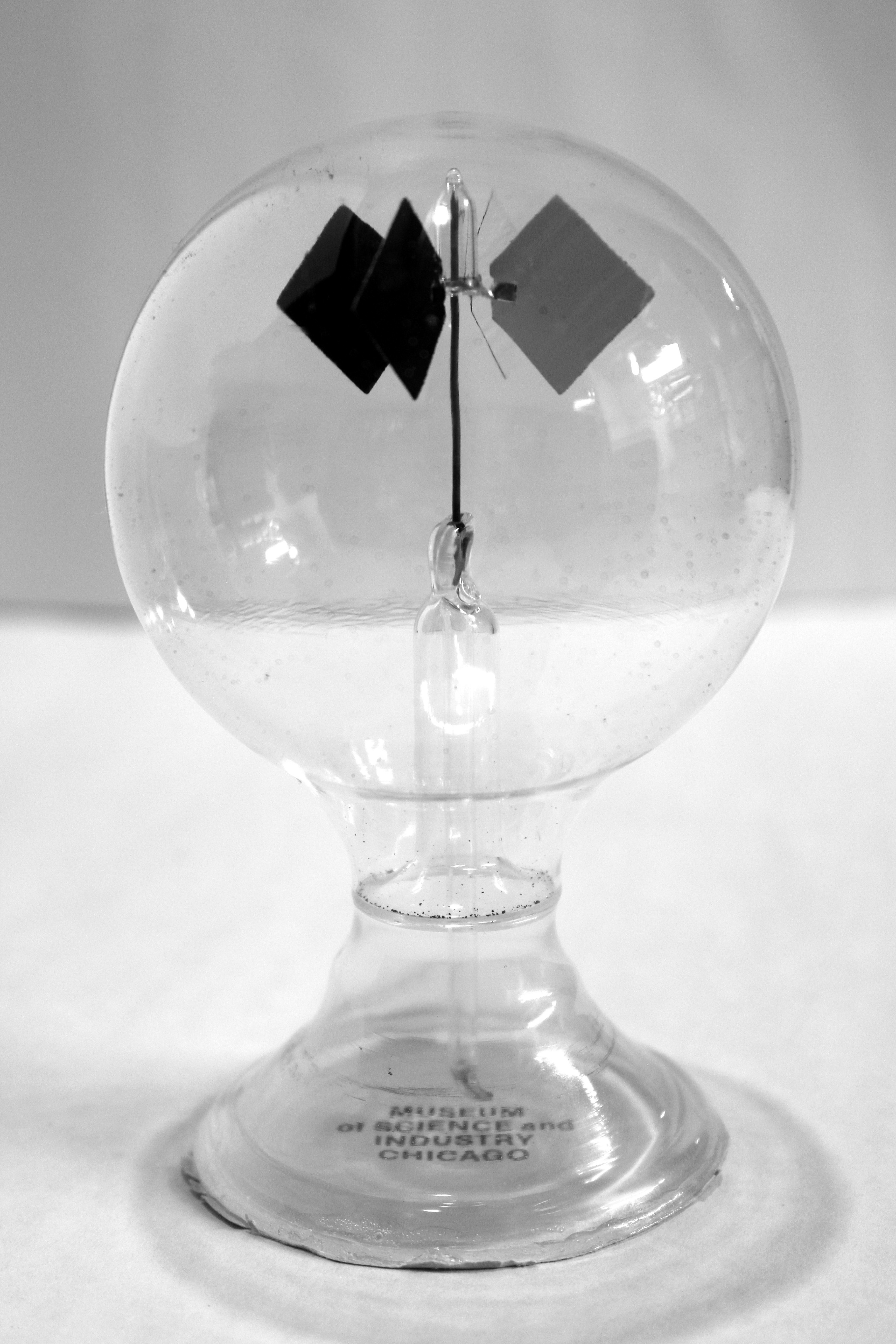
Pictured above is a Crookes radiometer of the type you can buy in museum gift shops and toy stores all over the world. This particular one was purchased in the gift shop of the Museum of Science and Industry in Chicago, sometime in the late 80's. It still works as well as the day it was purchased, over 30 years ago. All you need to do is shine light on it and the vanes will start to turn.
It is a fairly simple device. Four vanes mounted symmetrically around a tube shaped spindle that sits upside down on a needle point, so that it can turn with very little friction. One side of each vane is black while the other side is white or silvered. All of this is enclosed in a clear glass bulb from which most, but not all, of the air has been removed.
There have been many variations on this simple design. Some involve variations on the number and shape of the vanes. Others involve enclosures of varying size and shape. In most cases we have something that resembles a tiny windmill or paddle wheel in an enclosure.
When you shine light on the vanes they start to turn, so an obvious conclusion is that the light is somehow exerting pressure on the vanes, causing them to turn. That was also the initial conclusion of Sir William Crookes (1832-1919), a British chemist and physicist, who first created one of these devices. It is such a common explanation for how the device works that it is often called a light mill.
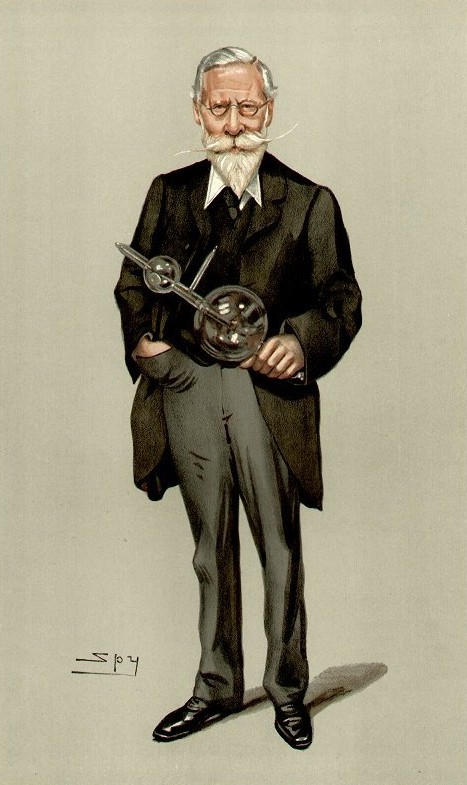
Caricature of Sir William Crookes, circa 1902, published in Vanity Fair, May 21 1903. Public domain image courtesy of Wikimedia Commons at https://commons.wikimedia.org/wiki/File:Sir_William_Crookes_1902.jpg
The problem is the explanation is wrong. The light only indirectly provides the energy needed to make the vanes turn. It does so by heating up the black side of the vanes more than the white. This temperature difference is what powers the movement of the remaining air molecules in the bulb, in such a way as to make the vanes turn. In fact, if you could take all the air out of the bulb it would stop turning.
In spite of the apparent simplicity of the device, it was surprisingly hard for physicists to figure out exactly how it worked. For awhile it was indeed an enigma. The first public demonstration, by William Crookes, of the effect on which the radiometer is based, was at a 1874 meeting of the Royal Society. It attracted the interest of some of the best scientists of the time. The great Scottish physicist James Clerk Maxwell (1831-1879) and the Irish-born fluid dynamicist Osborne Reynolds (1842-1912) both spent time trying to explain how it worked.
It was not until 1879 that they came up with what is now generally considered to be the correct theoretical explanation. Both theoretical and experimental work on the radiometer continued off and on for another 50 years. Even German-born physicist Albert Einstein (1879-1955) published a paper on it in 1924 ("Zur Theorie der Radiometerkräfte" https://einsteinpapers.press.princeton.edu/vol14-doc/549 to 558, translated as "On the Theory of Radiometer Forces" https://einsteinpapers.press.princeton.edu/vol14-trans/318 to 322).
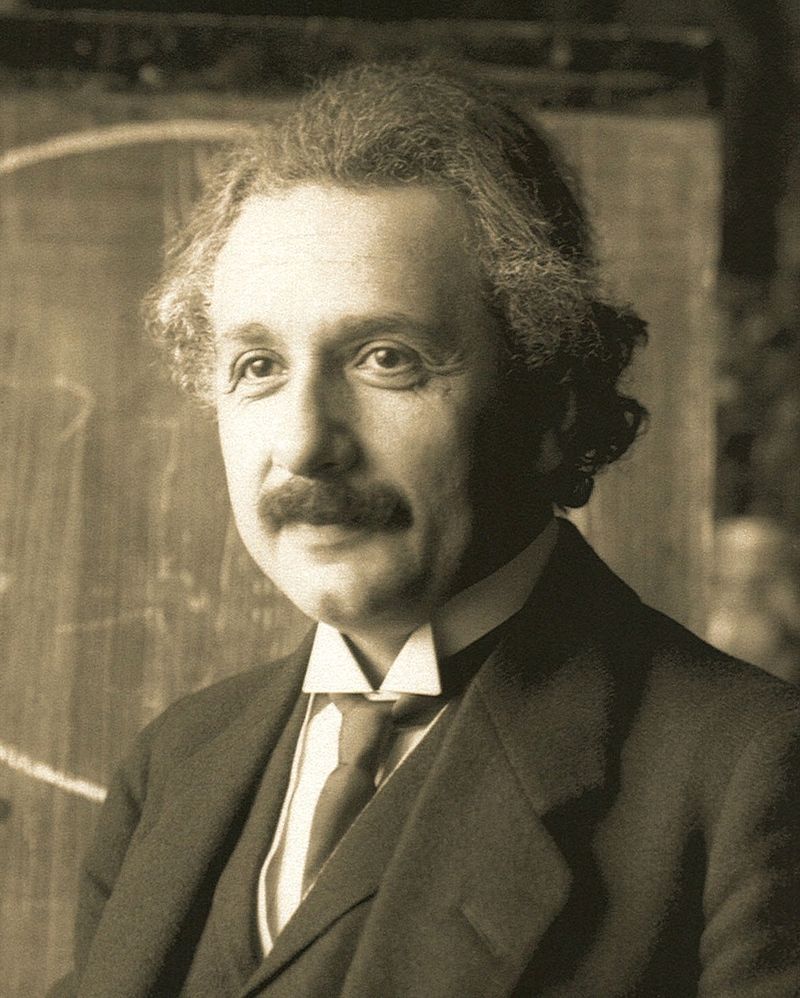
Albert Einstein in 1921, who 3 years later published a paper on the radiometer. Public domain image courtesy of Wikimedia Commons at https://commons.wikimedia.org/wiki/File:Einstein_1921_by_F_Schmutzer_-_restoration.jpg

James Clerk Maxwell worked on understanding the radiometer just before he died in 1879. Public domain image courtesy of Wikimedia Commons at https://commons.wikimedia.org/wiki/File:James_Clerk_Maxwell.png
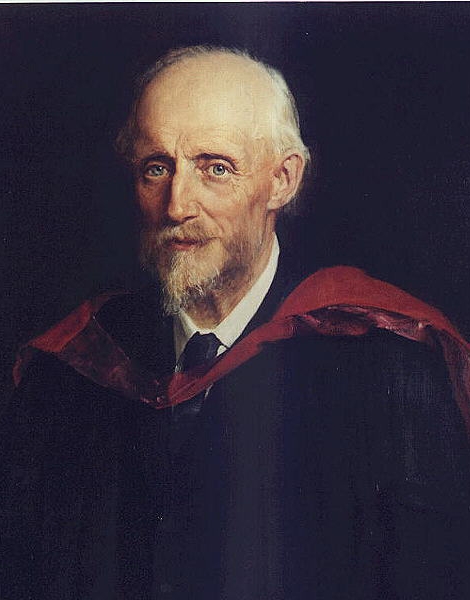
Osborne Reynolds (from 1904 painting) worked on understanding the radiometer in the 1870's. Public domain image courtesy of Wikimedia Commons at https://commons.wikimedia.org/wiki/File:OsborneReynolds.jpg
A renewed interest in the physics behind the radiometer began in the 1980s and continues to this day. This is mostly driven by work on things like microelectromechanical systems (MEMS) and atomic force microscopy (AFM), where the same kind of physics is involved. It is also related to the movement of particulate matter in the upper atmosphere. Some people have even proposed exploring the upper reaches of the atmosphere using vehicles powered by the same forces that make the radiometer vanes turn (See https://bargatin.seas.upenn.edu/).
Much research has been done on the radiometer. Crookes himself made a countless number of different radiometers. He varied every conceivable characteristic of the device, to determine its effect on performance. The experimental and theoretical work done by Reynolds and Maxwell in the 1870's did convince most physicists that the basic physics behind the device was understood, and interest in it started to wane by the end of the century. This was really just a case where possible avenues of further investigation ran into a dead end, due to limitations in experimental equipment available at the time.
The German physicists Walther Gerlach (1889-1979) and Wilhelm Westphal (1882-1978) began investigating the radiometer in the 1920's to see if it could indeed be used to measure radiation pressure, given a low enough vacuum. In a paper Gerlach published in 1923 (Untersuchungen an Radiometern. W. Gerlach, H. Albach, Zeitschrift für Physik 14 (1923), 285-290.) he opens with the statement:
As is well known, there is no complete theory of the radiometer available.
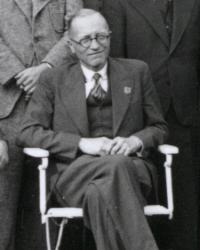
Wilhelm Westphal in 1935, who wrote a series of papers on the radiometer in 1920-1921. Image from Wikimedia Commons at https://commons.wikimedia.org/wiki/File:Westphal,Wilhelm_1935_Stuttgart.jpg under the Creative Commons Attribution 3.0 Unported (CC BY 3.0) license at https://creativecommons.org/licenses/by/3.0/deed.en courtesy of Gerhard Hund, from his father Friedrich Hund.
This is a somewhat surprising statement given that it comes almost 50 years after Crookes first began his investigations. But the fact is that, even today, it is hard to explain exactly how the device works in simple concise terms. While the basic physical principles behind its operation are not really up for debate, exactly how they apply to a particular device is not always clear. This has led a lot of current researchers to use computer simulations, to better understand what is going on.
What we know for sure is that it is not light pressure that makes the vanes turn. Light does exert pressure on the vanes but it is nowhere near enough to make them turn. The effect of the light is to heat up the vanes and the surrounding glass bulb. Visible light passes through the glass bulb and heats up the black side of the vanes more than the white. Infrared radiation — emitted by all warm objects — which has wavelengths too long for the human eye to see but can be sensed as heat by the skin, on the other hand, is absorbed by the glass bulb, heating it up.
When the residual gas molecules in the bulb interact with the vanes and the inner surface of the bulb, their kinetic energy will change. On average they will rebound from a hotter surface with more kinetic energy than from a colder surface. Naively, one would then expect the hotter black surface to experience a greater pressure from the rebounding molecules than the white surface and that this pressure difference is what turns the vanes. To a certain extent this is true but the details are a bit more complicated. There are also other processes at work that we will discuss later in the book.
To exactly explain what is going on requires the use of the kinetic theory of gases. For a particular radiometer design, computers are often used to simulate the gas dynamics and explain exactly how it makes the vanes turn. Such simulations are beyond the scope of this book. We will restrict ourselves to a more general, semi-quantitative description of how the radiometer does and does not work.
The outline of the book is as follows. We begin with a history of the origin of the device and the bewildering number of experiments that Crookes performed. He created radiometers of many different kinds, shapes and sizes. The common radiometer is but one of many possible ways to design a radiometer. This is followed by a description of how it works in general terms, that we think can be understood by people with only a very modest understanding of physics. Some of the more technical details have been worked out in a problems section which requires a bit more of a physics background.
The main protagonist in this story is of course Sir William Crookes who is an interesting individual in his own right. For those interested in learning more about him there is a short biography and timeline of his life in the appendix. A bibliography with references where you can learn more about the radiometer is also included.